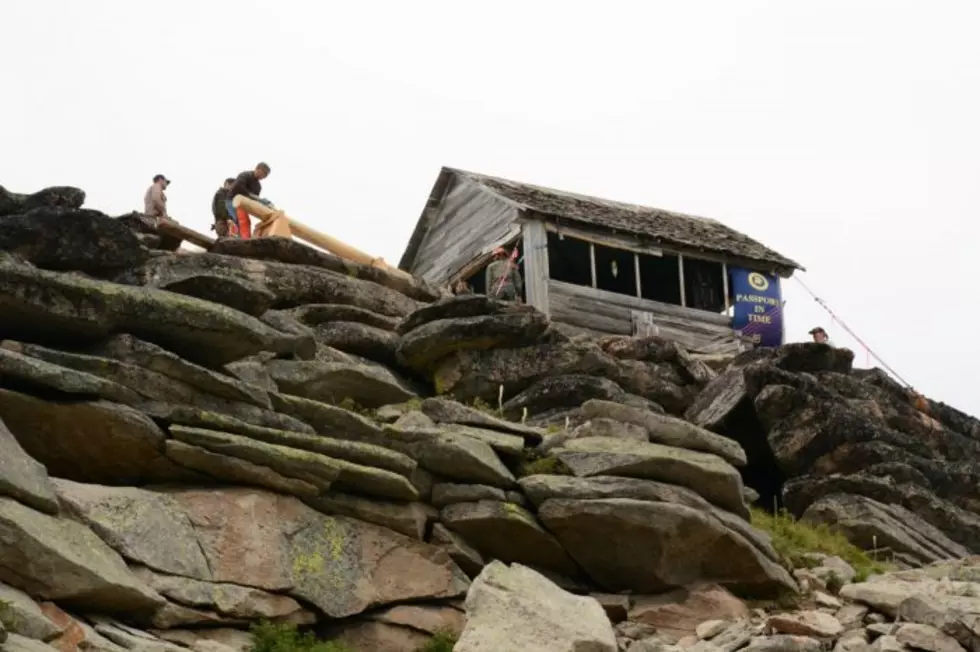
Skookum Butte: Volunteers save historic lookout for the ages
LOLO NATIONAL FOREST - If it weren’t for some dedicated volunteers, one of the most historic buildings on the Lolo National Forest might have tumbled from its high mountain perch.
More than eight miles up Elk Meadows Road west of Lolo, within yards of the Montana-Idaho border, a small square building has balanced on a boulder outcrop for 92 years.
At 7,215 feet, the Skookum Butte Lookout was a worthy fire lookout, providing lofty views for hundreds of miles into the mountains of the Nez Perce-Clearwater National Forest to the southwest and the Lolo National Forest to the northeast.
But the age of the fire lookout passed decades ago, for the most part, and time and neglect has taken its toll on the building. Shifting rocks caused it to list. A little more tilt, and it might slide from the mountaintop. Fortunately, a few people refused to forget about the lonely lookout.
“Fire prevention officer Libby Langston brought me here up in 2012, along with Kyle Stetler of the Forest Fire Lookout Association. They kind of put the bug in my ear, saying ‘Let’s do something with this,’ ” said Lolo National Forest archaeologist Sydney Bacon. “In the more recent pictures, the building was still standing, but it was kind of leaning a bit. It was obviously in need of some serious TLC.”
Bacon started to lobby the Lolo National Forest to restore the lookout, but it took some convincing. Bacon’s main argument was the Skookum Butte Lookout’s unique construction.
Built in 1928, it was constructed similar to a log cabin. The builders used some unusual techniques, such as mortice-and-tenon joints where pegs are carved on the ends of a horizontal log so they fit in a groove carved lengthwise into a standing log.
Only three such lookouts still exist, and two are on the Lolo National Forest. The lookouts erected later were more like clapboard kits that could be packed up the mountainsides on mules.
“These are non-renewable resources. Once this is gone, it’s gone forever. We can’t rebuild from scratch a 1928 lookout and say it’s from 1928,” Bacon said.
In 2016, Bacon got the green light and started writing proposals for a restoration project. She and historic preservation specialist Jack Poppen predicted it would be a three-year project, mainly because they’re limited to a couple weeks of work a year.
Fortunately, the Forest Service has pot of money as part of its Heritage Stewardship Enhancement Program just for such efforts. Bacon was able to get $20,000 to pay for supplies and the transport of 22 logs to the lookout site.
So, for the past two weeks, 11 volunteers with the Passport In Time program and several U.S. Forest Service employees have worked long days to finish the first phase of restoration work.
Poppen knew he had his work cut out for him. He’s familiar with many historic construction techniques from the variety of buildings he’s worked on. But since no one has restored this type of building, he had a little bit of a learning curve. And teetering on the top of a boulder pile in high winds didn’t make anything easier.
The rules of restoration say the workers have to keep as much of the original building as possible. So Poppen had to figure out which logs were still good, or which part of each log was still good. If most of a log was sound, workers had to measure and cut a section to replace just the bad portion.
“We’re not just wildly swinging hammers and throwing nails around,” Poppen said.
That’s why Poppen chose to focus on the south and west sides of the lookout – they suffer the most weather damage.
Work was slow the first few days as Poppen and his volunteers learned how to fit the replacement logs into the tenon grooves. But two weeks later, he was pleased to have found his own groove.
It helped to have volunteers like retired Forest Service employee Kim Dufty of Colorado around for both weeks. Most of the 11 volunteers worked just one week. But many will return next year, probably to replace the roof.
That’s if Bacon can get some more money. In the meantime, she’ll probably be working on getting the building on the National Register of Historic Places. Aside from being more than 50 years old, it meets two of the four criteria: unique construction and an association with an event, that is the early days of firefighting.
“Even without doing the research, this building is 92 years old – it deserves to be eligible for the register,” Bacon said.
